Did you know that fewer than 30% of global audiences realise Qatar is the world’s largest exporter of liquefied natural gas—while most headlines focus instead on stadiums, airlines, and scandals? Unpacking the hidden angles in Qatar news reveals not just stories, but power struggles, media strategies, and complex realities that affect how the world views a rapidly rising Gulf nation. If you think Qatar news is all about the Arab Cup or the luxury of Qatar Airways, think again. In this article, you'll discover the untold forces shaping global opinions—and why staying informed demands much more than a passing glance at the headlines.
- The underreported facts and biases in Qatar news coverage.
- How key players like Andy Hall and Qatar Airways Group drive international narratives.
- The impact of migrant worker stories and human rights discussions on policy and perception.
- Practical tips to stay savvy and informed while consuming news about Qatar.
Unveiling the Hidden Facts About Qatar News: The Untold Impact on Global Perception
While mainstream coverage often centers on Qatar’s gleaming skyscrapers, airline triumphs, and football events such as the Arab Cup, the deeper layers of Qatar news tell a story about global image-making and soft power. For instance, Qatar’s evolving identity as the world’s largest exporter of liquefied natural gas remains overshadowed by headline-grabbing events like the FIFA World Cup. Yet, these less-discussed achievements shape not only its regional relevance but also its leverage in international diplomacy and trade.
Moreover, international headlines frequently spotlight controversies around human rights, migrant worker campaigns, and the nation’s intricate ties with Saudi Arabia. But beneath this, local realities and nuanced reforms are rarely highlighted in-depth. Stories regarding changes to labor laws or the empowerment of rights defenders often get lost amidst sensational coverage, further distancing global audiences from Qatar’s true social and political dynamics.
This selective spotlighting isn’t accidental—Qatar’s approach to news is both strategic and responsive. With powerful interests at play, from elite government officials to group chief executive officers in media and aviation, the result is a landscape where what’s not reported can be just as telling as what is. Understanding these hidden facts is crucial for anyone wanting to move beyond the surface and grasp the real influence of Qatar news on the global stage.

“Fewer than 30% of global audiences know that Qatar is the world’s largest exporter of liquefied natural gas — yet international attention is often focused elsewhere.”
The Power of Narrative in Qatar News: Shaping Opinions and Discourse
The power to shape public opinion in Qatar—and by extension, its image abroad—rests heavily in the hands of the country’s media outlets and their chosen narratives. Stories related to the Arab Cup, Qatar Airways Group expansions, or evolving ties with neighbors like Saudi Arabia are meticulously curated. Key players, such as editorial boards, group chief executive officers, and even international strategic partners, guide how subjects from migrant worker reforms to economic ambitions are presented both locally and for export to global audiences.
This narrative control isn’t unique to Qatar, but the country's accelerated growth and global ambitions make its approach especially significant. For example, the decision to highlight international sporting events and downplay sensitive topics like modern slavery or growing activism among human rights defenders reveals a deliberate media strategy. The intent is to project an image of progress while managing international scrutiny—a balancing act seen across numerous media releases and news outlets based in Doha.
Understanding the way these narratives are shaped and presented can help readers become more critical consumers of Qatar news. It's the difference between accepting a polished, strategically crafted story at face value and delving into the complex motivations, influences, and interests that define Qatar's media landscape.
Andy Hall and the Role of Investigative Reporting in Qatar News
One cannot overstate the impact that Andy Hall—and investigative journalists like him—have had on exposing realities that might otherwise remain hidden in Qatar news. Mr Hall’s probing reports have shed light on migrant worker conditions, including allegations of modern slavery and responses from both companies and officials.
Hall's tenacious reporting draws global attention to issues such as unpaid wages, unsafe conditions, and the hard-fought fight for justice abroad. By working alongside local and international human rights defenders, and leveraging partnerships with organizations like Justice Abroad, he provides an informed counter-narrative to officially sanctioned press releases.
The ripple effects of such reporting are clear: governments, NGOs, and international media refocus their attention on Qatar's ongoing reforms. Hall’s efforts also embolden local journalists to pursue stories that go beyond the official line—effectively making Qatar news more transparent, if only incrementally, and offering a more honest lens on the realities facing migrant workers.

Human Rights Issues in Qatar News: Decoding the Coverage
Human rights coverage in Qatar news invariably fluctuates between diligent reportage and careful omission. While select stories on improved migrant worker laws or investments in justice abroad make headlines—especially when tied to international events like the FIFA World Cup—the scope and depth of such coverage often depend on editorial guidance and global attention cycles.
Activist voices and rights defender initiatives sometimes receive positive press, particularly when reforms are announced or infrastructure advancements like the expansion of Hamad International Airport provide a backdrop for positive transformation. However, many critical concerns—such as transparent compensation, legal protections, or fair representation of migrant workers—are still selectively addressed.
To truly understand the Qatar news narrative around human rights, readers need to distinguish between public relations efforts and in-depth journalism. By recognizing gaps or sudden shifts in coverage, it becomes easier to assess what is being amplified, what is being downplayed, and why certain stories resurface primarily when global events or international scrutiny are at their highest.
Qatar News and Qatar Airways: Media, Reputation, and International Influence
Qatar’s emergence as a soft power hub owes much to the high-profile expansions and relentless rebranding efforts seen in Qatar Airways news coverage. From the modernization of Hamad International Airport to the pursuit of awards like "Best Airline by Skytrax", the dialogue about Qatar Airways Group extends well beyond flight paths—it’s about projecting competence, hospitality, and competitiveness in the global aviation industry.
Stories of international strategic partnerships, new routes to global destinations, and milestone moments for the carrier's group chief executive and management team further reinforce the airline’s role as a symbol of progress and ambition. Media outlets play a crucial role in shaping global perceptions—often using positive news releases to distract from economic or political controversies, especially when the country faces scrutiny over labor and human rights.
By understanding how Qatar Airways features in the wider tapestry of Qatar news, readers can better appreciate the interplay between market-driven reputation management, international aspirations, and the carefully crafted images presented to both local and foreign stakeholders.
Inside Qatar Airways: Group Chief Executive Officer and Strategic Partnership Stories
The reputation of Qatar Airways is closely interwoven with the policies and public appearances of its Group Chief Executive Officer. Media coverage highlights pivotal deals, fleet enhancements, and high-profile partnerships, casting the executive officer not just as the face of the airline, but as a driver of the country’s global engagement strategy.
From alliances with other flagship carriers to diplomatic overtures that secure open skies agreements, every news release about Qatar Airways Group serves a dual purpose: building trust with international travelers, and signaling the nation’s ambitions to policy makers at home and abroad.
By examining these stories critically, audiences see how group chief executive decisions become news events in their own right—setting the tone for both business confidence and the wider image of Qatar as an innovative economic leader.
Airways Group Policies and Their Reflection in Qatar News
Airways group policies, particularly those concerning employee welfare, passenger safety, and expansion initiatives, frequently receive favorable coverage in national and international Qatar news outlets. Strategic communications ensure that milestones—such as the opening of new international routes, recognition by industry organizations like Skytrax, or upgrades at Hamad International Airport—are proactively broadcast to balance out less favorable stories related to labor disputes or operational challenges.
Coverage of policy changes is often tailored to resonate with international audiences, highlighting commitments to sustainability, innovation, and customer experience. The strategic partnership stories—whether they herald a new code share agreement or signal a bigger role in global aviation alliances—further illustrate how airways group narratives connect with the broader branding efforts of Qatar.
As such, readers should be mindful of how airways group announcements are often positioned as symbols of progress and modernity, even when other pressing concerns—such as employee rights or service disruptions—are addressed only minimally or through controlled messaging.
Migrants in Qatar News: Between International Scrutiny and Local Realities
No issue tests the credibility of Qatar news quite like coverage of the migrant worker experience. Reports on accommodation, wages, and conditions—especially as construction surged for international events like the World Cup—have brought both praise for reforms and criticism for persistent gaps. Striking the balance between portraying progress and acknowledging hardships is a challenge that often leaves local realities underrepresented.
While high-profile reforms and statements from government ministers are prominently featured, the lived experiences of migrant workers filter into mainstream news mainly through investigative efforts or advocacy from organizations such as Justice Abroad. At times, the media frames such stories as evidence of Qatar’s commitment to improvement; at others, coverage remains defensive, seeking to counter foreign accusations or negative reporting.
Understanding how migrant news coverage is shaped—by what’s included and what’s omitted—remains central to unraveling the full picture of justice, fairness, and transformation within Qatar’s fast-growing society.
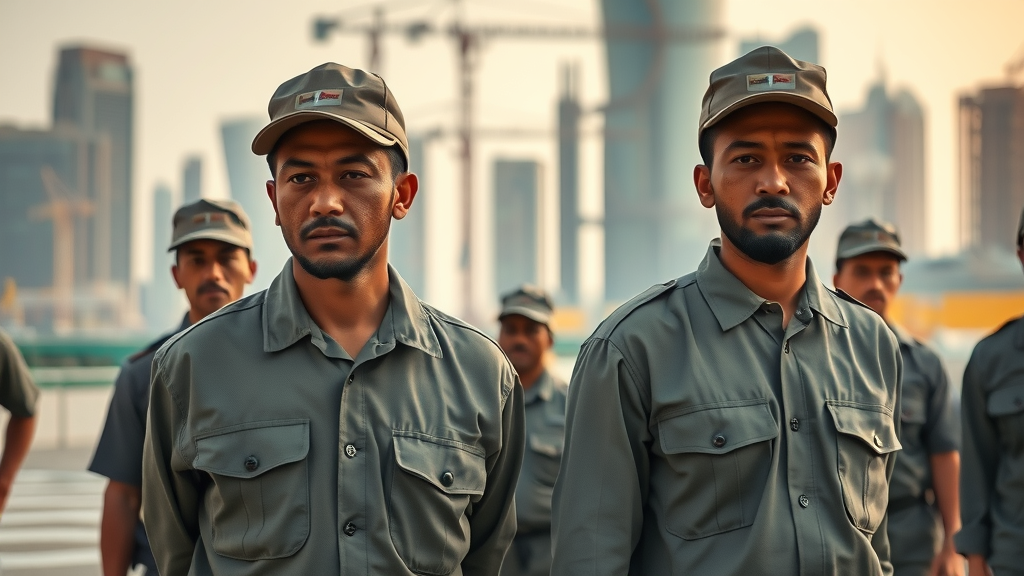
Migrant Workforce and Human Rights: Justice Abroad Perspectives
International attention on migrant worker conditions in Qatar accelerated with the build-up to the FIFA World Cup and the Arab Cup. Organizations like Justice Abroad and prominent rights defenders have pressed for meaningful reforms—advocating fair treatment, safer work environments, and reliable legal recourse for grievances. This advocacy has forced issues like wage theft, passport retention, and substandard living conditions into news cycles both at home and abroad.
While Qatari law has evolved to better protect migrant workers, the narrative around justice abroad often involves stark contrasts. Positive coverage points to new protections and laws; critical reporting, fueled by journalists such as Andy Hall, highlights instances where enforcement lags or abuses persist.
As a result, migrant worker news coverage is a barometer for the credibility of both Qatar’s domestic reforms and its international image. Genuine progress is possible, but only when stories move beyond repetition of official statements to broader investigative scrutiny.
Saudi Arabia’s Ties with Qatar News: An Evolving Relationship
The relationship between Saudi Arabia and Qatar has been a frequent topic of Qatar news. After years of political tension and blockades, recent rapprochements have resulted in renewed media cooperation and cross-border economic partnerships—often amplified through positive coverage in both Qatari and Saudi outlets.
This evolving relationship holds wider regional significance, impacting media narratives about the Gulf as a whole. Qatar news often highlights joint initiatives, cultural exchanges, and diplomatic meetings with Saudi Arabia, using these to present an image of regional unity and progress. However, competitive dynamics and deep-seated rivalries still simmer beneath the surface, occasionally surfacing in stories about economic competition, foreign policy, or differing societal reforms.
Audiences should approach such coverage thoughtfully, recognizing that national interests often color the news and that stories of cooperation frequently serve both soft power goals and realpolitik calculations in the intricate landscape of Middle Eastern geopolitics.
Major Events Spotlighted in Qatar News: Arab Cup, Sports, and Soft Power
If there’s one area where Qatar news shines internationally, it’s in its coverage of major sporting events. The Arab Cup, FIFA World Cup, and world-class facilities like Hamad International Airport are central to the country’s ambition to be seen as a leader in sports diplomacy and soft power. Through detailed news releases, promotional campaigns, and live broadcasts, these events are used to project national unity, hospitality, and modernity.
Yet, while media coverage lauds logistical triumphs and celebrity sightings, the more complex implications of hosting global events—such as debates on labor practices, sustainability, and legacy—often receive less prominent placement. These stories matter not only for sports fans but for anyone interested in how Qatar crafts its image in a highly competitive international media environment.
As a result, understanding Qatar news during major events means looking past the highlights and examining what’s left out, what’s emphasized, and how it fits into broader regional and global narratives.
Arab Cup and Beyond: How Sports Coverage Shapes Qatar News
The Arab Cup served as a showcase not just for football but for Qatar’s skilled orchestration of media coverage. Preparations, fan experiences, and milestone moments were all spotlighted, often overshadowing difficult conversations about migrant workers and labor conditions. Sporting triumphs are used as vectors of soft power, aligning with the country’s strategic pursuit of positive international attention.
Media releases and live broadcast feeds feature glowing endorsements from players, public figures, and international visitors—crafting an image of success and unity that extends beyond the pitch. At the same time, occasions such as the Arab Cup provide convenient opportunities to highlight progress on human rights, albeit sometimes more in terms of promise than proof.
For Qatar, the intersection of sports and news is more than just entertainment—it’s an assertive play in the global perception game, balancing narrative control with key messaging designed to open doors, attract investment, and shape policy opinions worldwide.
| Aspect | Qatar News | Other Gulf Nations |
|---|---|---|
| Migrant Worker Rights | Frequently reported, often with emphasis on reforms and international scrutiny. | Mentioned, but usually with less depth and frequency. |
| Human Rights Defenders | Coverage mixed; positive for reforms, defensive during criticism. | Coverage often minimal or restrictive. |
| Sports as Soft Power | Highly prominent, integrated into national branding. | Occasional, but less central to soft power imagery. |
| Transparency on Controversies | Selective; some issues openly acknowledged amid global attention. | More often omitted or downplayed in official news. |
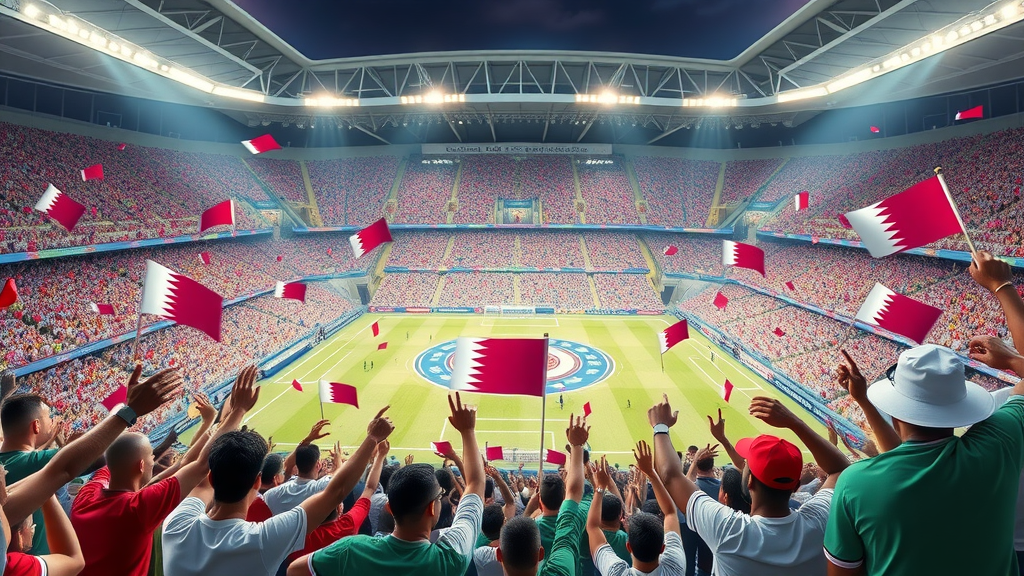
Why Understanding Qatar News Matters: Implications for Policy and Society
Keeping a critical eye on Qatar news is not just an academic exercise—it’s vital for anyone interested in the intersection of media, policy, and society. News coverage can influence everything from investment decisions to diplomatic relations, and from corporate strategy to public sentiment. When international headlines cycle between airline launches, sports victories, and labor controversies, the true stakes are often in the background: shaping how foreign governments, multinational corporations, and civil societies interact with—and react to—Qatar.
At the heart of these implications lies the country’s dual imperative to promote modernization while maintaining key local traditions. This is particularly evident in how chief executive officers and media leaders curate content and decide which international partnerships, reforms, or controversies to spotlight. Understanding these drivers is crucial for making informed judgments about news credibility, policy relevance, and broader societal changes in Qatar.
Society as a whole benefits when news consumers ask tough questions about motives, bias, and omissions—transforming passive absorption into active, informed engagement with the media that shapes their perspectives on the Middle East and beyond.
Key Stakeholders: Who Shapes Qatar News?
The forces shaping Qatar news span government ministries, media executives, private stakeholders, and even influential figures in industries such as aviation and construction. Group chief executive officers, especially in organizations like Qatar Airways Group and leading national media companies, wield considerable power over what stories run and how they are framed.
These stakeholders are not only responsible for the editorial line but also for aligning coverage with Qatar's strategic goals—be it international legitimacy, economic diversification, or cultural preservation.
International partnerships, sponsorship deals, and high-stake events become vehicles for preferred narratives, often constructed with the input of prominent executives and their extended networks. Recognizing who these players are and the interests they represent is key to decoding the true intent behind Qatar news.
The Influence of Chief Executive Officers and Group Chiefs on Media Narratives
The role of chief executive officers and group chief executives in influencing media coverage cannot be overstated. From the heads of national news agencies to the top brass at Qatar Airways, their decisions determine not just what is published, but also how controversies are managed, achievements are celebrated, and policies are explained.
Stories about improvements at Hamad International Airport, major sporting event sponsorships, or humanitarian initiatives consistently trace back to executive announcements or exclusive interviews. Their voices are positioned as authoritative, delivering the dual benefits of building brand confidence and setting the agenda for public discourse.
For consumers and analysts, keeping track of executive statements can provide meaningful insight into both upcoming stories and the underlying motivations that drive Qatar news cycles.
Expert Opinions: Perspectives on Qatar News Transparency
Experts monitoring Gulf media stress the calculated nature of Qatar news transparency. With pressures to satisfy both international partners and domestic audiences, editorial strategies often walk a fine line between candid acknowledgment of controversies and the strategic promotion of national achievements.
Analysts note that Qatar’s news model echoes that of other Gulf powers, but its speed of transformation and focus on global engagement make its evolution particularly noteworthy. Whether it’s a news release about economic reform or a cautious report on human rights struggles, there’s always a context of reputation management and narrative control.
For those invested in understanding the region, expert analysis offers a roadmap to reading media with a critical eye, recognizing when transparency is genuine and when it serves broader soft power or economic objectives.
“Qatar news coverage is carefully curated to balance international image with local tradition.” — Middle East Media Analyst
Strategic Partnerships: The Role of Media Alliances in Crafting Qatar News
Forming strategic partnerships with international media and other major Gulf outlets has become a cornerstone of Qatar’s news dissemination strategy. Cross-platform collaborations and mutually beneficial media alliances amplify positive stories—like airline expansions, hospitality milestones, or humanitarian programs—on a global scale.
At the same time, shared interests with powerful partners shape what fails to make the headlines; contentious issues like modern slavery allegations or political dissent are smoothly managed or selectively timed for release. These alliances help Qatari media not only broaden their reach but also reinforce established narratives.
Ultimately, understanding the influence of such partnerships is critical for anyone seeking a holistic view of Qatar news. Media alliances determine whose voices are heard, which stories are prioritized, and how domestic realities are translated for—and sometimes filtered from—the international stage.
Lists of Misconceptions: Common Myths About Qatar News
- Qatar news focuses solely on sports.
- Human rights are never covered.
- Migrant worker stories are ignored.
- All Qatar Airways news is positive.
- Local news does not impact foreign policy.
People Also Ask: Why Is Qatar News So Influential?
The influence of Qatar news comes from its strategic management of both content and timing—ensuring that stories about economic progress, sports, and humanitarian strides reach as many screens worldwide as controversies about labor or regional rivalries. This influence has real-world consequences, shaping everything from popular perceptions of the Middle East to foreign policy debates in major capitals.
As the country invests in flagship events, high-profile companies, and diplomatic outreach, its media messages become harder to ignore. Understanding what drives this influence helps consumers stay aware, engaged, and discerning—qualities essential for navigating today’s information-rich, context-poor news cycles.
How does Qatar news impact international perceptions of the Middle East?
Qatar news acts as a window into broader Middle East dynamics, shaping perceptions through a mix of innovation stories, sporting achievements, and human rights reforms. By prioritizing stories that reflect modernity and progress, while actively participating in international events like the Arab Cup and FIFA World Cup, it reshapes regional narratives—often presenting Qatar as an example of positive change, despite ongoing challenges.
For global audiences, these curated stories influence opinions about not just Qatar, but also the Gulf region’s ability to adapt and modernize. This dynamic often places Qatar news at the center of debates on everything from soft power and foreign policy to the credibility of Gulf-based reporting on controversial issues.
To grasp the full impact, one must look beyond the headlines and analyze whose interests benefit from each news cycle—a practice that reveals deeper insights into the forces shaping regional reputation and Middle Eastern geopolitics.

What are the most critical issues featured by media outlets in Qatar?
Critical issues highlighted in Qatari media include economic diversification, Qatar Airways expansions, and international partnerships. Social and cultural reforms, such as evolving laws on migrant workers and new rights for employees, also gain substantial attention—particularly when framed as evidence of modernization.
However, not all coverage is created equal. While flagship achievements and positive policy outcomes are prominently featured, reports on human rights challenges, freedom of expression, or incidents of modern slavery may be less frequent and often carefully worded.
By tracking these editorial trends, audiences can better evaluate the balance between self-promotion, genuine progress, and the necessary oversight of complex social and political matters in Qatar and the wider Gulf.
Why are migrant worker stories central to Qatar news debates?
Coverage of migrant workers is central to Qatar news debates because it addresses key questions about labor reforms, global scrutiny, and national credibility—especially in the build-up to and aftermath of the World Cup and Arab Cup. Investigative journalists such as Andy Hall have made the conditions and rights of migrant workers a litmus test for transparency and genuine social progress.
These stories generate strong reactions from international observers, human rights organizations, and reform advocates within Qatar, fueling conversations about justice, corporate responsibility, and the pace of reform. The attention devoted to migrant worker stories often sets the tone for how Qatar is viewed—both by its residents and by the outside world.
Ultimately, the prominence of these debates underscores the nation’s struggle to balance rapid development with fair labor policies and robust rights protections.
How does Qatar news differ from Saudi Arabia news coverage?
The main difference lies in narrative focus and editorial tone. While Qatar news often prioritizes national branding, international collaborations such as the Qatar Airways and sports diplomacy, Saudi Arabia coverage tends to center on regional politics, security, and heritage preservation.
Qatar is more likely to spotlight progress and global integration, whereas Saudi outlets emphasize tradition and stability. Both countries use their media to promote soft power, but their messages, frequency of reform coverage, and approach to sensitive issues like human rights or modern slavery are distinctly tailored to different audiences and strategic aims.
Comparing the two helps reveal broader trends in Gulf media, such as selective transparency, strategic messaging, and the complex interplay between domestic politics and international perception.
Detailed Answers to People Also Ask on Qatar News
Qatar news plays a key role in shaping how the world sees the Middle East by focusing on progressive development, international events like the Arab Cup, and strategic economic initiatives while selectively addressing sensitive topics such as human rights and migrant labor.
By placing international events and economic successes in the spotlight, Qatar news crafts a compelling narrative for audiences abroad. Coverage is methodically tailored, emphasizing modernization and soft power alongside carefully measured engagement with difficult subjects, like reforms for migrant workers or responses to human rights abuses.
The net effect is a blend of positive projection and calculated omission, giving international audiences a mostly progressive view of Qatar—provided they are discerning enough to look behind the scenes for context.
Media outlets in Qatar highlight matters such as economic policy, international diplomatic efforts, Qatar Airways milestones, and evolving laws on migrant workers, with variable depth on controversial subjects.
Most Qatar news focuses on business, aviation, and sports—areas representing the country’s global aspirations. When it comes to labor policies or human rights, outlets may cover legislative changes or new government initiatives, but comprehensive critical analysis is rare. Editorial bias emerges in the absence of follow-up on contentious issues, reflecting the broader soft power agenda.
This selective reporting enables Qatar to maintain a positive image while limiting reputational damage from deeper investigatory journalism or prolonged controversy.
Migrant worker stories are essential in Qatar news due to international scrutiny over working conditions and reforms, especially around events like the Arab Cup and during coverage from investigative journalists such as Andy Hall.
Legitimate concern for worker welfare—and increasing coverage from both local and global sources—ensure that migrant worker stories remain in the headlines. Investigative efforts by individuals like Andy Hall keep the pressure on policymakers to deliver genuine reforms, inspiring a critical dialogue on justice, fairness, and international accountability.
The centrality of these stories reflects not just present challenges but Qatar’s future ambitions in global reputation and human rights leadership among Gulf nations.
Qatar news often emphasizes national branding and economic progress, whereas Saudi Arabia coverage may center on regional politics; each uses its outlets to shape a distinct international narrative.
As distinct Gulf states, Qatar and Saudi Arabia have different messaging priorities—Qatar frequently publicizes its modern image, sports-hosting prowess, and international connectivity. Conversely, Saudi coverage tends towards traditionalism, regional stability, and alignment with broader Arab interests.
Both approaches influence how the international community perceives the Gulf, but the stories chosen and their framing reflect each country’s foreign policy aims and domestic realities.
What You Should Know Before Trusting Qatar News Sources
With so many competing narratives and priorities, it’s vital for news consumers to develop strong analytical skills—including the ability to spot editorial biases, agenda-driven omissions, and misleading promotional tactics. Recognizing when a story serves the interests of a government, airline, or corporate partner is key to avoiding misperceptions.
Every Qatar news release, sports report, or in-depth feature carries the fingerprint of its origin—whether that’s a chief executive officer’s press office, a government PR agency, or a local rights defender. Readers should take the time to cross-reference stories, assess the outlet’s credibility, and look for independent confirmation of controversial claims.
Becoming a critical news consumer is essential when analyzing stories from any region, but especially in fast-evolving, strategically minded contexts like Qatar’s.
Analytical Frameworks: How to Identify Biases in Qatar News
To separate fact from carefully crafted fiction in Qatar news, start by looking for signs of selective sourcing—stories quoting only officials or emphasizing government triumphs over grassroots concerns. Be alert for gaps in coverage where sensitive issues, like migrant worker exploitation or delayed reforms, receive little follow-up.
Another useful approach is to compare how stories about major events—like Qatar Airways expansions or sports tournaments—are treated by Qatari outlets versus international media and rights organizations. Patterns of omission, euphemistic language, or repetitive "good news" bulletins may indicate areas of bias or soft censorship.
Regularly rotating your news sources, seeking out both critical and supportive reports, and paying attention to editorial backgrounds can help you chart a more accurate course through the often-turbulent waters of Qatar’s media landscape.
Frequently Asked Questions about Qatar News
-
How independent are Qatar news outlets?
Independence varies; while some outlets maintain journalistic standards, most face significant editorial guidance from government or leading corporate interests. -
Do local journalists face restrictions?
Yes, local journalists may face both official and informal pressures, especially on sensitive topics such as human rights or political dissent. -
Which topics are most censored or promoted?
Controversies such as modern slavery, political opposition, and labor unrest are often downplayed, while success stories in business, aviation, and sports are amplified. -
Can Qatar news stories influence foreign policy?
Absolutely; media coverage plays a role in shaping diplomatic relationships, trade agreements, and international reputations—often serving as a soft power extension of government agendas.
Actionable Insights: How to Stay Informed and Critical with Qatar News Sources
A smart, skeptical approach to Qatar news is your best defense against misinformation, bias, and agenda-driven reporting. In a world where media is both a tool and a weapon, being an active, analytical consumer is more important than ever—especially when the stories you read shape global perceptions and influence policies far beyond Qatar’s borders.
It's not enough to read one headline or rely on a single news source. Instead, actively seek out competing narratives, compare coverage from local and international outlets, and ask probing questions about editorial motives, funding sources, and the wider implications of the stories being told.
Above all, remember: being a media-literate newsreader isn’t just about catching errors or omissions—it’s about understanding the world more fully and giving yourself the tools to act as an informed, critical global citizen.

- Cross-check stories with multiple sources.
- Understand the editorial background of outlets.
- Monitor international and local perspectives.
- Stay updated on major events like the Arab Cup and Qatar Airways expansions.
“Being an informed consumer means not just reading Qatar news, but learning to question what’s not reported.” — Regional Journalism Expert
Key Points To Remember When Evaluating Qatar News
- Qatar news content is shaped by both local and international priorities.
- Major events used as vectors for soft power projection.
- Human rights and migrant worker issues are selectively revealed or downplayed.
- Media alliances and executive decisions deeply influence coverage.
Moving Forward: Enhancing Media Literacy Around Qatar News Today
Media literacy is the single most powerful tool you possess to navigate Qatar news and its far-reaching influence—use it to read between the lines, challenge assumptions, and promote honest, impactful journalism in an increasingly complex global landscape.
Become a vigilant news consumer: cross-check, question, and connect the dots—Qatar news shapes more than headlines. Let it sharpen your critical eye and global perspective.
To gain a deeper understanding of Qatar’s multifaceted news landscape, consider exploring the following resources:
-
“Qatar bids to become first Gulf state to host Olympics”: This article discusses Qatar’s official bid to host the 2036 Olympic and Paralympic Games, highlighting the nation’s existing infrastructure and ambitions to become the first Middle Eastern country to host the Olympics. (reuters.com)
-
“Qatar posts $208 million second-quarter budget deficit as spending rises”: This report provides insights into Qatar’s economic performance, detailing a budget deficit driven by increased public spending and the implications for the nation’s fiscal policies. (reuters.com)
These articles offer valuable perspectives on Qatar’s strategic initiatives and economic developments, enriching your understanding of the country’s current affairs.
 Add Row
Add Row  Add
Add 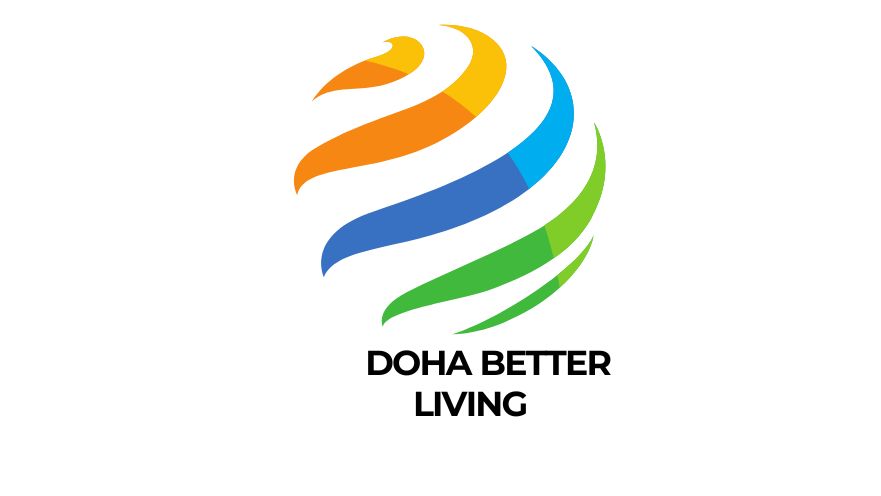
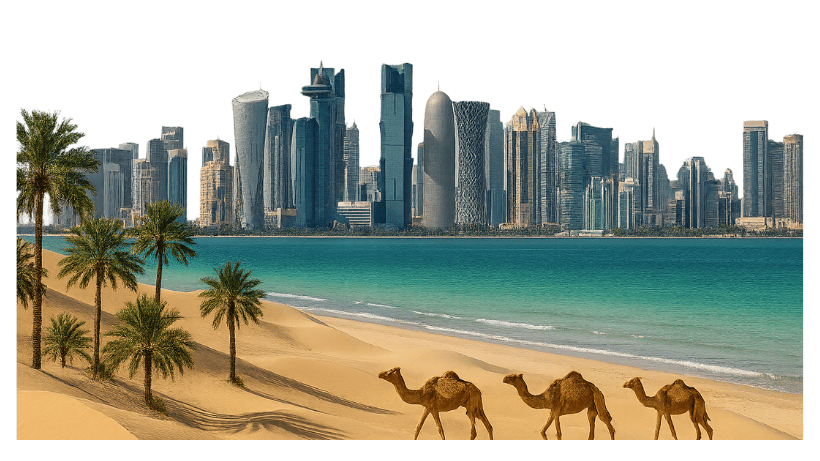
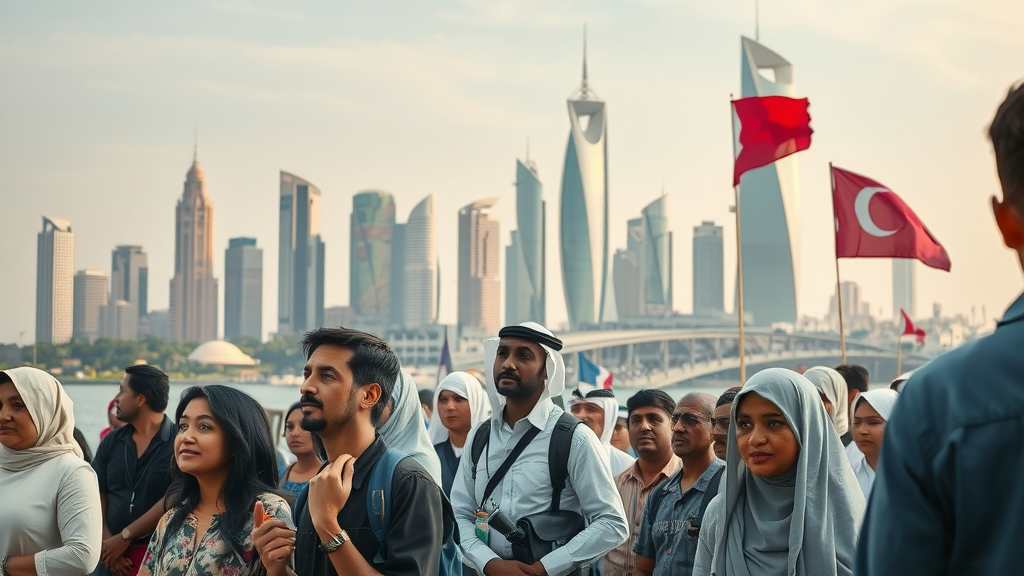

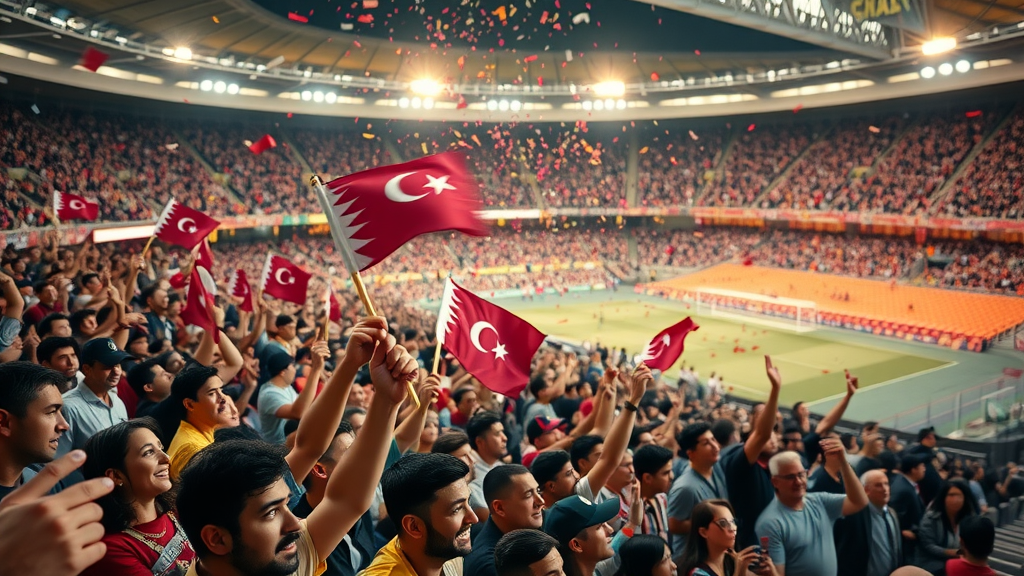
Write A Comment